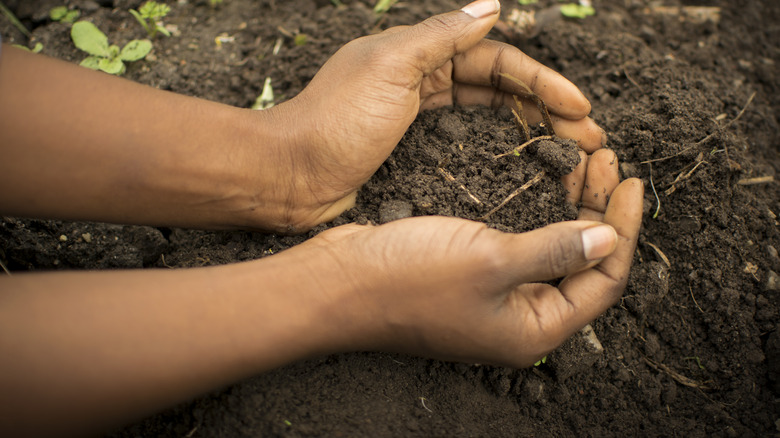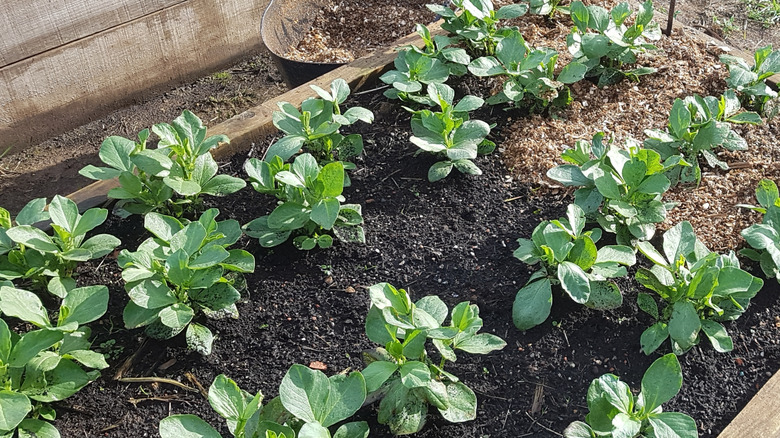Get Healthier Soil For Spring By Planting This Vegetable In The Fall
Once your summer garden has finished for the year, you may assume there isn't anything left to do except be patient and wait for the spring. That's not actually the case, though! Instead, you can take a lesson from farmers and plant a winter cover crop.
In case you don't know, a cover crop is a plant grown all over a single area to help fix the soil rather than for aesthetic or to necessarily harvest any food. The right cover crop not only helps to protect your soil from erosion and weed growth, but can even increase its nitrogen levels. Fava beans (Vicia faba) offer all of these benefits — and they're cold tolerant as well, making them perfect for fall planting.
Fava beans, like other members of the legume family, are nitrogen fixers. This means that the bean plant forms a symbiotic relationship with rhizobial bacteria, which allows the plant to use nitrogen from the air to fuel its growth. This should also improve the nitrogen levels in your soil, especially if you cut down the plants and mix the chopped up pieces into your soil to create a green manure afterward.
Growing fava beans for soil health
To ensure that your fava beans will be able to fix nitrogen, it's best to add a bacterial inoculant to your soil. You should also test your soil's pH, as the rhizobial bacteria can't thrive in overly acidic conditions. Fava beans grow best in full sun, though they can also handle some shade ... especially if you're growing them as a cover crop and aren't concerned about yields.
Plant your fava beans about an inch or so deep and space them around 6 inches apart. Fava beans are relatively drought tolerant once established, so you may not need to water them much at all, depending on your weather in autumn. While it takes about four months for the plants to grow beans, you'll want to kill them before they begin to produce pods if you're growing favas for soil health.
Alternatively, if you live in an area with cold climates, temperatures below or around 15 degrees Fahrenheit will likely kill the plants for you. You can let the roots break down in place, and use the chopped up stalks as green manure to improve your soil. If you want to start incorporating even more nitrogen-fixing plants into your autumn garden, crimson clover is also an excellent cover crop.

